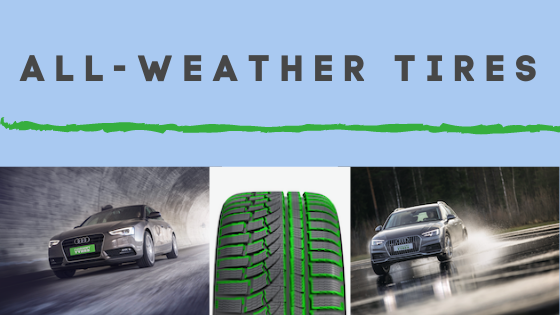Studded tires should be used for winter conditions when the all-season tires no longer give you the traction needed for safe driving. Winter tires are better than all-season tires when the temperatures go below 45 degrees, which mean that you shouldn’t be waiting for the snow to arrive to change; but instead, you should change as soon as you are allowed to use the studded tires. Depending on the location, this can vary a little bit; however, since the winter tires are already good in cold weather and much safer to have the winter tires on when the first snow arrives, you can drive safely already from the start.
The best is to let a professional tire service station do the tire change for you, as they will know how to do it properly, starting with having the correct tools, being able to balance the tires and adding weights if needed to ensure that the tires rotate smoothly without any side forces. Then they can change the valves if needed and make sure that the tires are in good condition before they mount the tires. This is very important, as you will need to make sure that the tires have sufficient tread depth and that the tires are free from cuts or cracks.
They will also make sure that the tire pressure is correct so that when you drive away, you have the right pressure so that you have the best properties and performance from your tires. If the tires are not in good condition, they will have tires for sale so that you can get yourself a new set of tires to start the season with.
If you also use their tire storage, you will have the tires stored at the tire service station so that you don’t have to bother storing them at home and can avoid the inconvenience of bringing them back and forth. You can also be sure that the tires are stored in the correct conditions to ensure that heat, sunlight, and UV won’t negatively impact the condition of the tires. They will also mark the tires so that when the tires are mounted again, they will be placed in the correct position so that you can manage the wear profile of your tires optimally. This is done to even out the wear between the front and the rear tires.
You might also wonder when it is time to change back to your all-season tires. The same philosophy should apply there. You want to ensure that you are not driving when you have winter conditions after you have changed to your all-season tires. You should therefore wait long enough to ensure that the winter won’t return for a few days. If you can manage without your car if the snow returns, you can change earlier than if you are heavily dependent on your vehicle for day-to-day transport. Just make sure that your decision is driven by solid and safe decisions. Make sure that you also follow local regulations for when is the latest date that you can drive with studded tires once the winter has passed.
For more information regarding studded winter tires, visit: https://www.nokiantires.com/
